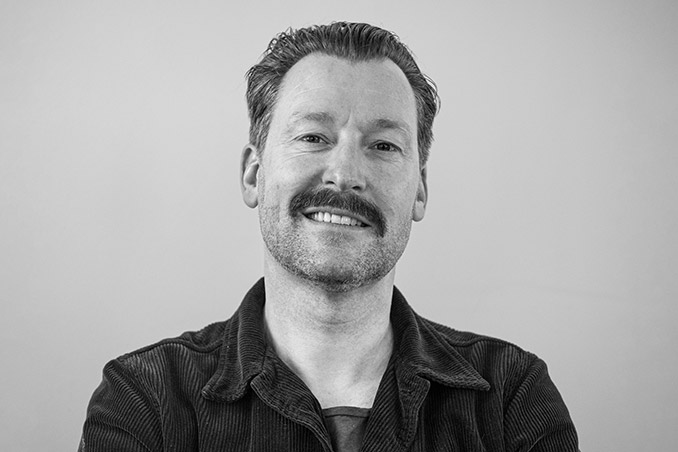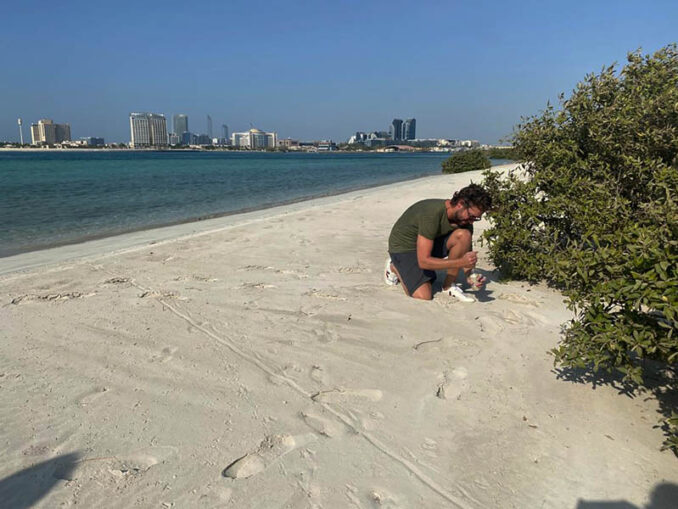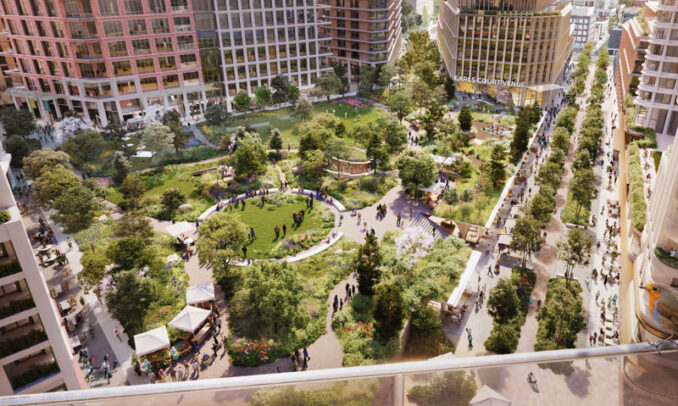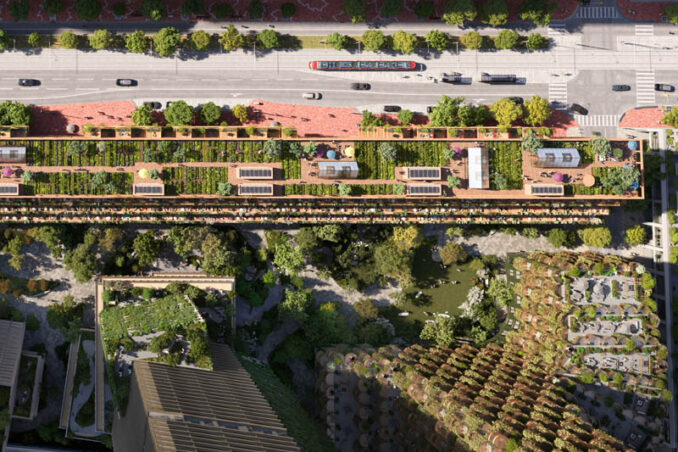
Rasmus Astrup is Partner and Design Principal at the nature-based design studio SLA, where he spearheads the studio’s largest and most complex international projects. Rasmus is a leading specialist in city nature, sustainable landscape architecture, and integrated climate adaptation and has led SLA’s most forward-looking and award-winning projects all over the world. His perpetual emphasis on creating the best possible places for life – all life – is continuously manifested through inspiring and green urban spaces with living ecosystems that help create robust and biodiverse cities with a higher quality of life. Rasmus is the recipient of several major international honors, amongst them the 2021 World Landscape of the Year Award.

WLA: Why did you become a landscape architect?
I chose to become a landscape architect in high school, during a day I was sick and at home. It was before you had easy access to the internet, so I decided to read the entire book about potential careers you could have after high school. That day, I selected landscape architecture education as my 1st priority – followed by architecture and engineering, as you had to pick three educations when applying. But basically, I think I’ve always felt a strong connection to nature and gardening. As a child, I remember volunteering for gardening tasks with my parents and at my grandparents’ farm. Back then, and still today, seeing those physical changes through projects, done either by my own hands or by professional contractors, fascinate me.
I guess that I did my first landscape project when I was five with the planting of a birch tree sapling found while shoveling soil. I then made my own garden, of probably half a square meter, where I put it right in the center. That birch tree, which is now five years younger than me, still grows in my mom’s garden. Actually, I planted it very near her house, not being able to imagine the current 40 years of growth where the tree is more or less destroying the foundation and parts of the facade. Despite this, she can’t bring herself to remove it.
WLA: What is your approach to landscape design?
The design approach in SLA is not something static, it’s quite agile. Our values remain the same, but our approach always adapts to the specific social, biological, environmental, and aesthetic opportunities and challenges that we find.
But fundamentally, our solutions are always based on an understanding of nature and its values and processes. That’s why we call ourselves a ‘nature-based design studio’. And, as we see it, nature-based thinking requires an interdisciplinary team and approach. I am not capable of solving those challenges myself; I need my smart colleagues, and I need the latest knowledge. I need that because we sometimes have to start from an insect, the soil conditions, a piece of natural stone, or by deeply understanding the climatic conditions. With our client’s goals and desires at the center, we start conversations and investigations rather than immediately rolling out the tracing paper and sketching design solutions with a soft pen. This value-driven approach fosters constant learning and cultivates a culture of curiosity within SLA. It’s very rewarding. I would say that we have a culture of being nerds in SLA – in a nice way.

Our knowledge base is, in itself, not unique. There are many other firms that know the same things as us. But if I should dare to say how we differentiate ourselves from them, it is that we know how to translate that knowledge into a genuinely nice design – one that also fulfills commercial objectives, which I think is essential. We recognize the fact that our clients have business cases and commercial obligations – and actively engage with these. Listening, investigating, and seeking new knowledge and inspiration collaboratively. We are idealists with strong values but not self-righteous – and always professional consultants to our clients.
A recent and very cool thing is how our nature-based design approach is being appreciated, politically and commercially. For instance, in the UK, where most of our projects are ‘landscape-led’ masterplans. Practically, this means that we have a close collaboration with the architects, planners, and clients from the project’s very beginning, including discussions on massing, infrastructure, and so on. This often results in quite holistic discussions about water flow, birds, biodiversity, and social infrastructure. So, instead of the conventional approach where the landscape architect is someone who comes in at the very end and fills out the empty gaps, it’s now flipped. It’s a big change compared to some years back, and ultimately it reshapes the city’s development paradigm. It’s really exciting to observe these shifting hierarchies and to see how our nature-based approach is being welcomed. It’s a global need for all cities.

WLA: How do you see the future of landscape architecture?
I see the future of landscape architecture as super exciting. There’s still so much to explore and challenge in our field. Especially if we seize the momentum we have now.
I envision a shift in the traditional role of landscape architects towards much more interdisciplinary work. Our profession basically started out with a quite narrow definition, as ‘garden designers’. Later the broader ‘landscape architect’ was introduced. Yet, disciplines like urban planning remained something separate, often done by building architects. Today, I find myself operating between the fields of masterplanning, biology, urban design, landscape architecture and even different research fields. This approach brings valuable results because it ties different perspectives together. I think that the future will only be more demanding in terms of expectations for interdisciplinary collaborations, knowledge, and for understanding complex processes.
‘Landscape architecture’ has never been hotter or more requested than right now. I’m pretty sure that it holds opportunities for landscape architects to take on new influential roles. At least, that is a tendency we are seeing in SLA. We consult cities at a very high level now, for instance, in Abu Dhabi where we have contributed to new city policies on biodiversity and urban spaces. That is quite new for SLA and – I think – for the landscape architecture profession at large.
Looking ahead, I hope to see some of our coming clients being landscape architects who have taken on the role of developer or politician. The classic landscape architecture services and skills will always be needed, but we also need to rethink how we educate future landscape architects so we can meet the evolving demands and seize new opportunities. Looking ahead, I hope to see some of our coming clients being landscape architects who have taken on the role of developer or politician.

